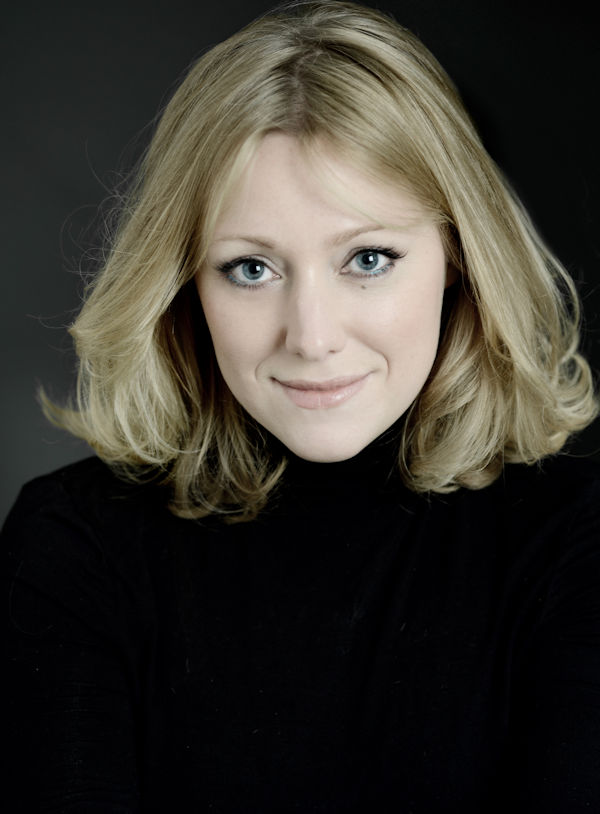Prom 16, Elder, Hallé – reason yoked to magic on one enchanted evening | reviews, news & interviews
Prom 16, Elder, Hallé – reason yoked to magic on one enchanted evening
Prom 16, Elder, Hallé – reason yoked to magic on one enchanted evening
Manchester's finest bring control as well as passion to spellbinding scores

Beguiling echoes, patterns and symmetries accompanied the Hallé on this Proms journey through the enchanted forests of orchestral sound.
Yet the colours and timbres that Sir Mark Elder drew from Manchester’s finest – an orchestra now 160 years young – in their annual Proms outing had a fine consistency. Their playing confirmed the arbitrariness of those textbook markers that chop up musical history into rigidly separated periods and tendencies. This wasn’t a matter of making Debussy sound like Wagner, or Stravinsky like Debussy, but of finding and refining an orchestral palette that can do equal justice to each fresh bid to ravish the ear. Without fail, the Hallé did that on a torrid but bewitching night.
If musical drama – in opera and ballet – gave a spine to Elder’s programme, so did the colouristic and chromatic sound-worlds nurtured by these composers in response to the various strange tales that shaped these works. Wagner, Debussy, Stravinsky: each dreamed of the combined art-work that would amalgamate music into a total sensuous experience that also enlisted drama, design, stage scenery and dance. However, the Hallé’s command of this material meant that no one would have left unsatisfied, missing a Bakst backdrop or a Fokine pirouette. The music felt entirely self-sufficient here. Elder never overplayed the exoticism of an evening that abounded in magical, mystical and otherworldly themes, and set the charm of folkloric material in dialogue with several sorts of art-music sophistication. He invoked cool Apollo as effectively as hot Dionysus.
In these wide-angled, sumptuously scored works, he could make the Hallé – fresh from the triumphant conclusion to its concert versions of Wagner’s Ring – sound lean as well as lush. His Tannhäuser overture had a measure and control that made you hear the links between the sacred dignity of the pilgrim motif and the profane sensuality of the “Venusberg” music which interrupts it. The scurrying strings of Venus need not sound neurotic and hysterical, and did not here. Equally, the brass-led trudge of the holy seeker should – for all its stirring heft – never turn into the aural equivalent of an advancing tank division. Elder’s even pulse and balanced textures dodged that risk.
Wagner yielded to Debussy’s 1889 cantata La Damoiselle Élue, written for soprano soloist, mezzo narrator and female choir – here, the clear and elegant Hallé choir and youth choir. Yes, choral Debussy can feel at this early stage of his career like stripped-down Wagner, but the artful orchestral writing hints in its unearthly woodwind flourishes at the more delicate wonders (not least of Pélleas et Mélisande) to come. La Damoiselle Élue sets the French translation of a somewhat sentimental soppy-mystical poem by Dante Gabriel Rossetti. Too much Pre-Raphaelite schmaltz was avoided, however, in large part thanks to the controlled finesse of the ever-excellent soprano Sophie Bevan (pictured below by Sussie Ahlburg) – a late stand-in, and a mightily effective one, for the indisposed Sabine Devieilhe. As narrator, the dark-hued mezzo of Anna Stéphany enriched the mood.
Stravinsky owned the second half, with his 1919 suite The Song of the Nightingale preceding the 1945 Firebird. Based on a Hans Christian Andersen story, The Song of the Nightingale has a tangled history. Planned first as an opera, it morphed into a “symphonic poem” that also served as a Diaghilev ballet score. The 1919 revision bursts with ear-catching Stravinskyan touches, from the crashing swagger of the opening chords and the uncanny chant of the nightingale-flute to the jeering, sardonic trombone. By now, the woodland sprites and elves of the late 19th century have picked up a modernist edge and bite. These post-Rite of Spring sonorities shadow the fairy-tale with urbane irony. Yet, as a warm-up act to the polished dazzle of the Firebird, this nightingale felt slightly out of place: brilliant, yes, but disjointed and erratic – though gorgeously played.
 The Firebird itself shone and soared. It began, unusually, with the Hallé choirs singing two of the folksongs that Stravinsky quotes in his score – a reminder of the popular idioms that often underpin even the most experimental music of this age. Elder deployed his forces so that we could hear and feel the work’s thrilling contrast between the occult chromaticism of the prince-wizard Kashchei the Immortal (the eight-tone “Rimsky scale”) and the more folksy (but never naive) harmonies of the humans that oppose him. As they must, all the woodwind soloists delighted, from the elusive flutter of the firebird-flute and the yearning oboe in the princesses’ dance to the daintily melancholic bassoon of the lullaby. Elder, though, equally brought to the fore the haunting shimmer and murmur of the strings, that ever-present forest floor and canopy against which the woodwind birds flash and swoop. Although the brass jabbed and strutted to superb effect, the quietest moments here perhaps cast the deepest spell. This Firebird whispered as powerfully as it thundered. At last, the sublime simplicity of the solo horn melody led the other sections in a concluding chorale that, inevitably, brought us back to Wagner’s pilgrim – and so closed the musical circle of a century. Sometimes restrained, but never bloodless, Elder let daylight into the magic and framed frenzy within reason. Stravinsky (if not Wagner) would have heartily approved.
The Firebird itself shone and soared. It began, unusually, with the Hallé choirs singing two of the folksongs that Stravinsky quotes in his score – a reminder of the popular idioms that often underpin even the most experimental music of this age. Elder deployed his forces so that we could hear and feel the work’s thrilling contrast between the occult chromaticism of the prince-wizard Kashchei the Immortal (the eight-tone “Rimsky scale”) and the more folksy (but never naive) harmonies of the humans that oppose him. As they must, all the woodwind soloists delighted, from the elusive flutter of the firebird-flute and the yearning oboe in the princesses’ dance to the daintily melancholic bassoon of the lullaby. Elder, though, equally brought to the fore the haunting shimmer and murmur of the strings, that ever-present forest floor and canopy against which the woodwind birds flash and swoop. Although the brass jabbed and strutted to superb effect, the quietest moments here perhaps cast the deepest spell. This Firebird whispered as powerfully as it thundered. At last, the sublime simplicity of the solo horn melody led the other sections in a concluding chorale that, inevitably, brought us back to Wagner’s pilgrim – and so closed the musical circle of a century. Sometimes restrained, but never bloodless, Elder let daylight into the magic and framed frenzy within reason. Stravinsky (if not Wagner) would have heartily approved.
rating
Share this article
The future of Arts Journalism
You can stop theartsdesk.com closing!
We urgently need financing to survive. Our fundraising drive has thus far raised £49,000 but we need to reach £100,000 or we will be forced to close. Please contribute here: https://gofund.me/c3f6033d
And if you can forward this information to anyone who might assist, we’d be grateful.

Subscribe to theartsdesk.com
Thank you for continuing to read our work on theartsdesk.com. For unlimited access to every article in its entirety, including our archive of more than 15,000 pieces, we're asking for £5 per month or £40 per year. We feel it's a very good deal, and hope you do too.
To take a subscription now simply click here.
And if you're looking for that extra gift for a friend or family member, why not treat them to a theartsdesk.com gift subscription?
more Classical music
 Cho, LSO, Pappano, Barbican review - finely-focused stormy weather
Chameleonic Seong-Jin Cho is a match for the fine-tuning of the LSO’s Chief Conductor
Cho, LSO, Pappano, Barbican review - finely-focused stormy weather
Chameleonic Seong-Jin Cho is a match for the fine-tuning of the LSO’s Chief Conductor
 Appl, Levickis, Wigmore Hall review - fun to the fore in cabaret and show songs
A relaxed evening of light-hearted fare, with the accordion offering unusual colours
Appl, Levickis, Wigmore Hall review - fun to the fore in cabaret and show songs
A relaxed evening of light-hearted fare, with the accordion offering unusual colours
 Lammermuir Festival 2025, Part 2 review - from the soaringly sublime to the zoologically ridiculous
Bigger than ever, and the quality remains astonishingly high
Lammermuir Festival 2025, Part 2 review - from the soaringly sublime to the zoologically ridiculous
Bigger than ever, and the quality remains astonishingly high
 BBC Proms: Ehnes, Sinfonia of London, Wilson review - aspects of love
Sensuous Ravel, and bittersweet Bernstein, on an amorous evening
BBC Proms: Ehnes, Sinfonia of London, Wilson review - aspects of love
Sensuous Ravel, and bittersweet Bernstein, on an amorous evening
 Presteigne Festival 2025 review - new music is centre stage in the Welsh Marches
Music by 30 living composers, with Eleanor Alberga topping the bill
Presteigne Festival 2025 review - new music is centre stage in the Welsh Marches
Music by 30 living composers, with Eleanor Alberga topping the bill
 Lammermuir Festival 2025 review - music with soul from the heart of East Lothian
Baroque splendour, and chamber-ensemble drama, amid history-haunted lands
Lammermuir Festival 2025 review - music with soul from the heart of East Lothian
Baroque splendour, and chamber-ensemble drama, amid history-haunted lands
 BBC Proms: Steinbacher, RPO, Petrenko / Sternath, BBCSO, Oramo review - double-bill mixed bag
Young pianist shines in Grieg but Bliss’s portentous cantata disappoints
BBC Proms: Steinbacher, RPO, Petrenko / Sternath, BBCSO, Oramo review - double-bill mixed bag
Young pianist shines in Grieg but Bliss’s portentous cantata disappoints
 theartsdesk at the Lahti Sibelius Festival - early epics by the Finnish master in context
Finnish heroes meet their Austro-German counterparts in breathtaking interpretations
theartsdesk at the Lahti Sibelius Festival - early epics by the Finnish master in context
Finnish heroes meet their Austro-German counterparts in breathtaking interpretations
 Classical CDs: Sleigh rides, pancakes and cigars
Two big boxes, plus new music for brass and a pair of clarinet concertos
Classical CDs: Sleigh rides, pancakes and cigars
Two big boxes, plus new music for brass and a pair of clarinet concertos
 Waley-Cohen, Manchester Camerata, Pether, Whitworth Art Gallery, Manchester review - premiere of no ordinary violin concerto
Images of maternal care inspired by Hepworth and played in a gallery setting
Waley-Cohen, Manchester Camerata, Pether, Whitworth Art Gallery, Manchester review - premiere of no ordinary violin concerto
Images of maternal care inspired by Hepworth and played in a gallery setting
 BBC Proms: Barruk, Norwegian Chamber Orchestra, Kuusisto review - vague incantations, precise laments
First-half mix of Sámi songs and string things falters, but Shostakovich scours the soul
BBC Proms: Barruk, Norwegian Chamber Orchestra, Kuusisto review - vague incantations, precise laments
First-half mix of Sámi songs and string things falters, but Shostakovich scours the soul
 BBC Proms: Alexander’s Feast, Irish Baroque Orchestra, Whelan review - rapturous Handel fills the space
Pure joy, with a touch of introspection, from a great ensemble and three superb soloists
BBC Proms: Alexander’s Feast, Irish Baroque Orchestra, Whelan review - rapturous Handel fills the space
Pure joy, with a touch of introspection, from a great ensemble and three superb soloists

Add comment